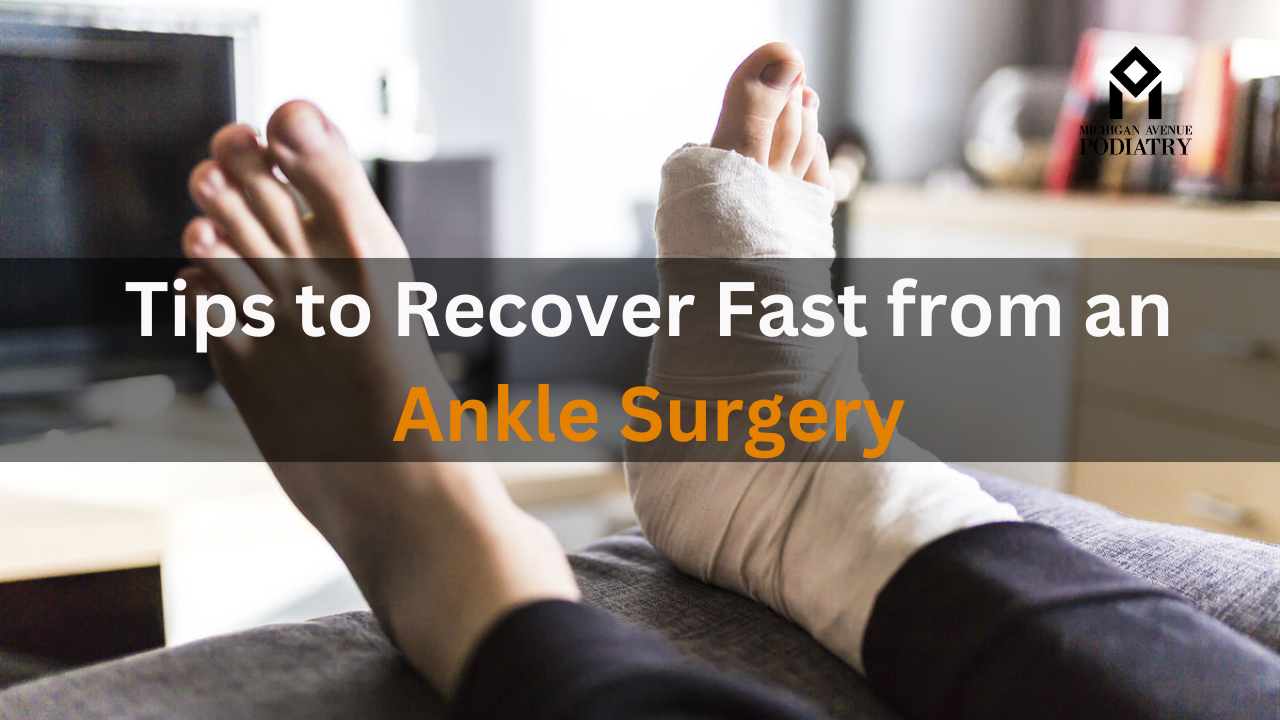Undergoing ankle surgery can be a daunting experience, but with the right preparation and post-operative care, you can facilitate a smooth and speedy recovery. Whether you’ve undergone ankle arthroscopy, ligament repair, or ankle fusion, proper rehabilitation is crucial for optimizing outcomes and regaining mobility. In this informative blog post, we’ll share expert tips from podiatrists on how to recover quickly and safely from ankle surgery, allowing you to return to your normal activities as soon as possible.
- Follow Your Podiatrist’s Instructions:
The first step in ensuring a successful recovery from ankle surgery is to carefully follow your podiatrist’s post-operative instructions. These instructions may include specific guidelines for wound care, activity restrictions, medication management, and follow-up appointments. Adhering to these instructions is essential for promoting healing and preventing complications during the recovery process.
- Elevate and Ice Your Ankle:
In the immediate post-operative period, it’s important to elevate your ankle and apply ice packs to reduce swelling and pain. Elevating your ankle above heart level helps minimize swelling by allowing excess fluid to drain away from the surgical site. Additionally, icing your ankle for 20-30 minutes at a time, several times a day, can help numb the pain and alleviate discomfort.
- Keep Weight Off Your Ankle:
Depending on the type of ankle surgery you’ve undergone, your podiatrist may recommend keeping weight off your ankle for a certain period to allow for proper healing. This may involve the use of crutches, a walker, or a knee scooter to help you move around without putting weight on your surgical foot. Avoid bearing weight on your ankle until your podiatrist gives you the green light to do so.
- Perform Gentle Range of Motion Exercises:
As your ankle begins to heal, your podiatrist may prescribe gentle range of motion exercises to prevent stiffness and promote flexibility. These exercises typically involve moving your ankle in various directions, such as dorsiflexion, plantarflexion, inversion, and eversion, within a pain-free range. Start with simple exercises and gradually increase the intensity as tolerated.
- Gradually Increase Weight-Bearing Activities:
Once cleared by your podiatrist, gradually reintroduce weight-bearing activities and functional movements to your daily routine. Begin with low-impact activities such as walking, swimming, or stationary cycling, and gradually progress to more challenging exercises as your ankle strength and stability improve. Avoid high-impact activities or sports until your podiatrist gives you the green light to resume them.
- Wear Supportive Footwear:
Choose supportive footwear with good cushioning and stability to protect your healing ankle and reduce the risk of injury. Your podiatrist may recommend orthotic inserts or braces to provide additional support and alignment for your foot and ankle during the recovery process. Avoid wearing high heels or shoes with inadequate support that may exacerbate strain on your ankle.
- Attend Physical Therapy Sessions:
Physical therapy is an integral part of the recovery process following ankle surgery, helping to restore strength, mobility, and function in the affected ankle. Your podiatrist may prescribe a personalized physical therapy program tailored to your specific needs and goals. Attend all scheduled physical therapy sessions and diligently perform prescribed exercises at home to maximize your recovery potential.
- Practice Patience and Persistence:
Recovering from ankle surgery takes time and patience, so don’t be discouraged by setbacks or delays along the way. Stay positive, focused, and committed to your recovery plan, and trust that gradual progress will lead to eventual success. Keep open lines of communication with your podiatrist, and don’t hesitate to seek guidance or support if you encounter any challenges during the recovery process.
Conclusion:
Recovering from ankle surgery requires dedication, commitment, and support from both you and your podiatrist. By following these expert tips for a speedy recovery, you can optimize healing, regain mobility, and return to your normal activities with confidence. Remember to prioritize self-care, listen to your body, and seek guidance from your podiatrist whenever needed. With patience, perseverance, and proper rehabilitation, you can achieve a successful recovery and enjoy the benefits of a healthy, pain-free ankle once again.




